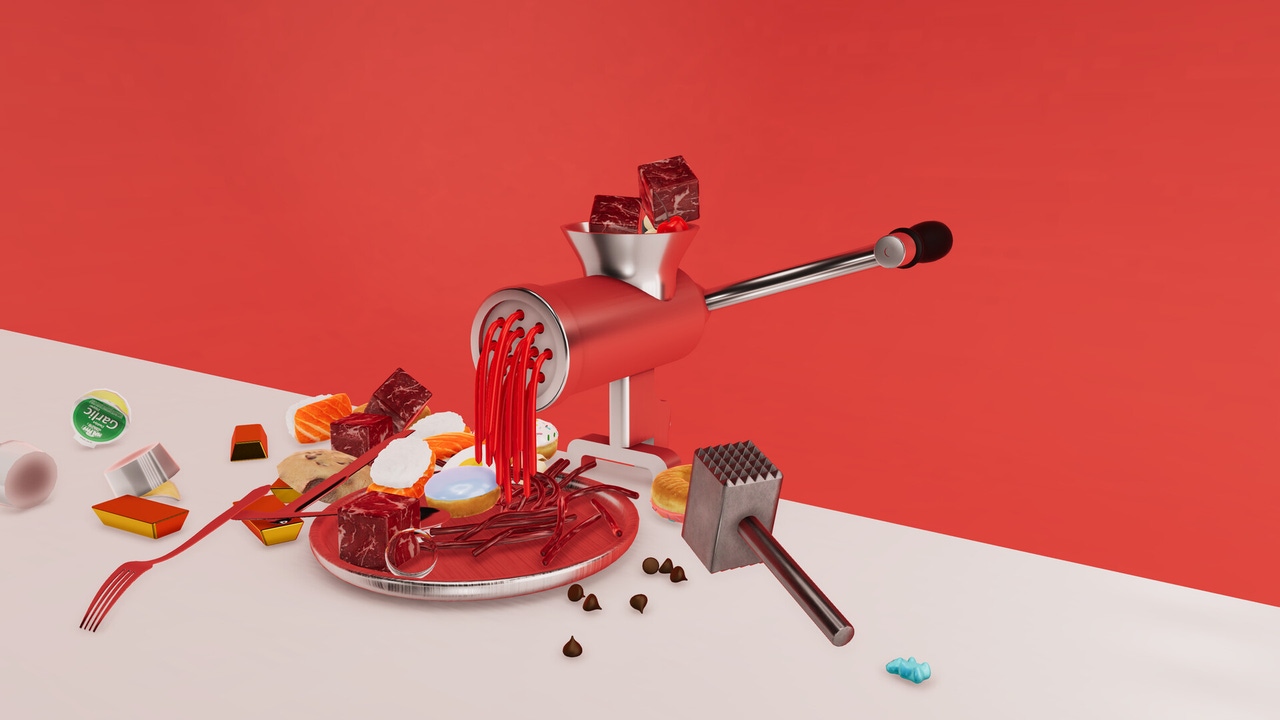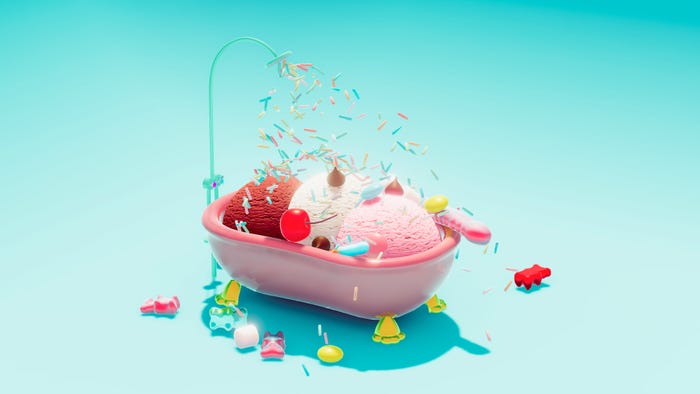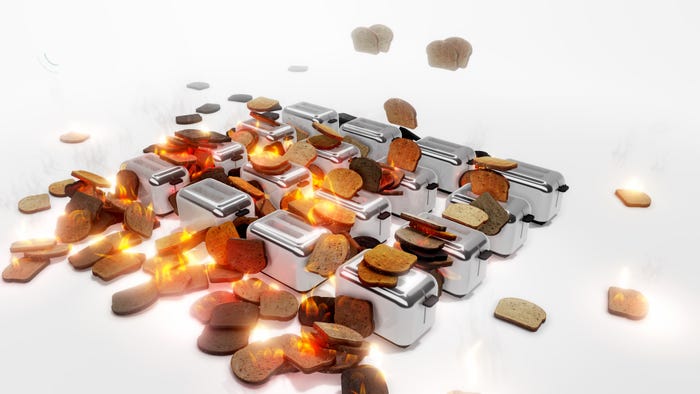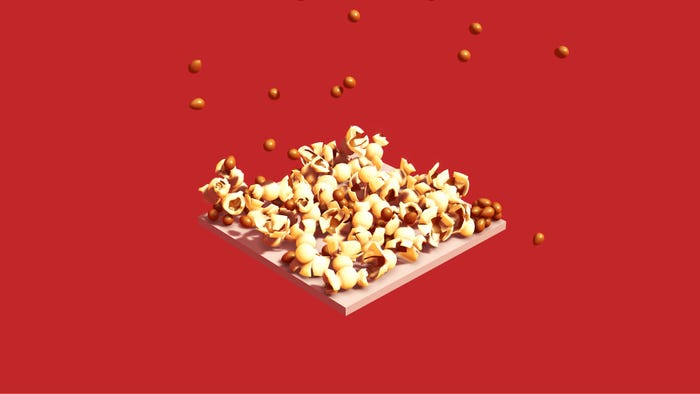Trending
Opinion: How will Project 2025 impact game developers?
The Heritage Foundation's manifesto for the possible next administration could do great harm to many, including large portions of the game development community.

Developers Tj Hughes and Maximilian Mueller spoke about the appeal of messing with your meal and why tying players' playful actions to musical tones made Nour: Play With Your Food satisfying to play.

The IGF (Independent Games Festival) aims to encourage innovation in game development and to recognize independent game developers advancing the medium. Every year, Game Developer sits down with the finalists for the IGF ahead of GDC to explore the themes, design decisions, and tools behind each entry. Game Developer and GDC are sibling organizations under Informa Tech.
Nour: Play With Your Food explores the aesthetics (and fun) of food by letting you slice, cook, and mess with some delicious-looking eats without getting your hands dirty.
Game Developer spoke with Tj Hughes and Maximilian Mueller of Panic, the game’s development studio, about how a 2am craving would lead to designing a game about making people hungry, how they decided which foods would translate well into a game about playing with your meal, and how they tied food and music together to make every interaction feel “oddly satisfying.”
Who are you, and what was your role in developing Nour: Play With Your Food?
Tj Hughes, creative lead: Hi! I’m Tj Hughes. I’m the creative lead on Nour: Play With Your Food. I make pretty visuals and call the shots on design decisions. Head chef, if you will.
What's your background in making games?
Hughes: I’ve always made little projects to show friends in high school. My self-taught game design skills stem from a deep curiosity and intense desire to create my own worlds…and ask my computer to do unreasonable things such as simulate 50 noodles flopping around in real time. I was a technical artist on a game called SmuggleCraft, and I released my own self-published game called Feesh when I was 19. I’ve always leaned towards wanting to make visuals in the game development process.

Images via Panic
How did you come up with the concept for Nour: Play With Your Food?
Hughes: Nour: Play With Your Food was a very hungry idea of mine that struck late one fateful night at like 2am. I wanted ramen, but the local ramen shop was closed. I had freshly learned how to make my own shaders, and was looking for a subject. My hunger inspired me to make art of food. I uploaded a small clip of noodles falling into a bowl to Twitter just for fun, and it amassed more attention than I could’ve expected. Most folks online were saying that the clip made them hungry. This lead me to add more and more to the project, wanting to see how far I could push the concept of virtual food making you hungry.
What development tools were used to build your game?
Hughes: We used Unity and Blender. Learning game development in high school predisposed me to get comfortable with whatever free tools were accessible to me. I was around 13 when I started learning, so using free software served as an interesting constraint.
What appealed to you about the idea of messing around with a variety of food-based vignettes? Why allow people to finally mess with their food without getting their hands dirty?
Hughes: I found that something about the subject matter of food made the game so much more fun to interact with. While playing, people would share their experiences of food and how they would play with food as kids. The game kind of made itself in a lot of ways, with many of its ideas stemming from people giving suggestions during gameplay demos. Something I noticed was that players of many different backgrounds could identify with a game and find something amusing about it. It taught me two things: play is universal, and food is universal.
How did you choose the twenty specific food vignettes you included in the game? What made them feel right for the experience? And can you tell us a bit about some of the ones you designed that did not make it into the game and why you cut them?
Hughes: Picking the food that a vignette will focus on was a mix between thinking about what foods were fun and interesting to me at the time, thinking about what foods weren’t technically difficult to pull off (how would you render beans in a real time game engine?), and thinking about what foods were visually interesting as well.
Ramen was the first scene in the game because there are so many fun and playful elements to ramen: the squish of the fishcake, floppiness of the noodle, the shininess of the piece of chashu. It’s a visually iconic dish.
There are a few ‘intermission’ scenes that got cut from the game because I couldn’t think of enough interactions for the foods to make an entire level from them. A few others were cut because of technical issues. A few of these scenes were: Blender, Cookie Oven, Pudding, and Sushi Conveyer Belt. I’ll let you speculate as to what these levels were about!

Images via Panic
What drew you to the game's striking art style? How did you come up with the game's visual style?
Hughes: Nour: Play With Your Food’s visual look comes from a combination of pop art photography, food blogs and commercials, and my personal love for highly-saturated colors. Ever since I watched my first 3D film as a kid, I was always interested in getting a video game to look just as high fidelity as those films. These days, it’s becoming easier and easier for anyone to be able to do that!
In wanting to create what I’d describe as ‘visual ASMR’, I tried to make the game’s visuals as high fidelity as one person could possibly make it. To help with this, I would take pictures of food I’ve eaten under neutral lighting, then sample it in the final texture that goes onto the game’s food. That way it becomes this sort of food diary, and the meals I’ve eaten become immortalized by this game’s wacky graphics.
What thoughts went into designing the various ways in which the player can interact with the food? How did you design the in-game kitchen tools and utensils players could use in the act of playing with their meal?
Hughes: The priority with the game’s interactions was fulfilling this sense of “oddly satisfying.” At the press of a button, what fun ways might the user want to play with their food? That’s what inspired the chop of the knife, the beat of the tenderizer, and the flame of the blowtorch. When designing the tools, I wanted them each to have a certain weight to them so that it felt like you were actually wielding an in-world object. That’s why the tools all can collide with other objects in the world as opposed to simply phasing through everything. Adjusting all the physics values to find the right balance between precision and fun was a huge exercise in trial and error.
You included the ability to work with the microphone to mess with the food as well. How did you design this mechanic? What drew you to work breath into the game as a tool?
Maximilian Mueller, dev, design, audio lead: Nothing is more immediate or natural than breath. We blow on food to cool it off, we yelp when touching a hot pan, we sing while we cook, we slurp up the last bit of broth. The best interfaces don’t have to be learned; they enable us to act via existing affordances in new contexts.
What interested you about tying the way players interacted with the food to the music? What do you feel this added to the experience?
Mueller: Music and food are natural companions! Two of life’s great joys. The truth is, it was an experiment that snowballed into something special. No two meals are the same just as no two live performances are the same. It felt right to pair Nour: Play With Your Food’s array of rich visual feedback with audio to match. After getting started, we just kept seeing ways to use music + signal processing to bring new life to the gorgeous game assets.
Hughes: In making the game the sensory experience that it is, we had to explore every opportunity to induce synesthesia that we could. Having an equal musical response for each player input is there to celebrate each of the player’s interactions with the game and reinforce that sense of “oddly satisfying.”

Images via Panic
How did you design the audio to work with the player's interactions? Can you walk us through the ways in which you connect the unpredictable player actions to a dynamic soundtrack?
Mueller: We like to say that Nour: Play With Your Food's music is an instrument anyone can play. In the literal sense, each food announces itself with a musical sound and serves as a percussion instrument. More abstractly, player unpredictability is the engine that drives the generative music system. A measure of the kinetic energy in the scene is used to “conduct” the music in a structural sense, while specific actions (e.g., engagement with the rhythm system or level mechanics) precipitates immediate and reproducible changes to the music/gameplay.
We felt it was important to design the rhythm system such that one could interact with it without knowing what a quarter note was, yet provide opportunities for the rhythmically-inclined to exercise their skill. Audio mechanics were designed to reinforce the level/physical game mechanics and provide satisfying, immediate, multimodal feedback.
What thoughts went into the musical style for Nour: Play With Your Food? What kind of music felt right for this playful, surreal experience?
Mueller: Creating Nour: Play With Your Food’s music system was a surreal experience in itself! The songs weren’t “written” in the traditional sense, instead being composed in real-time from permutations and modulations of thousands of notes, fragments, and rhythms. Stylistically, the goal was to allow for the possibility of many styles to emerge and furnish a wide range of beautiful, chaotic, quiet, and absolutely bopping moments.
Players are capable of taking pictures of their creations. What drew you to add this feature? Can you tell us about some of the fun, silly, or compelling pictures that players have shared with you?
Hughes: When designing the photo mode in Nour: Play With Your Food, I had Instagram foodies in mind. I wanted to give the player tools to orient the camera how they wanted, but also the option to add a drop of depth of field blur to give the photos that extra bit of professional composition. Screenshots that would make a food journalists’ mouth water.
I see players making faces with their food, sculptures, towers of gummy bears, and ramen with multi-colored noodles, just to name a few of the types of screenshots I see. But there’s two types of players; the ones that put together these nice and pleasant screenshots, and the ones that make a completely unhinged and chaotic mess. We love all our players equally.
You May Also Like